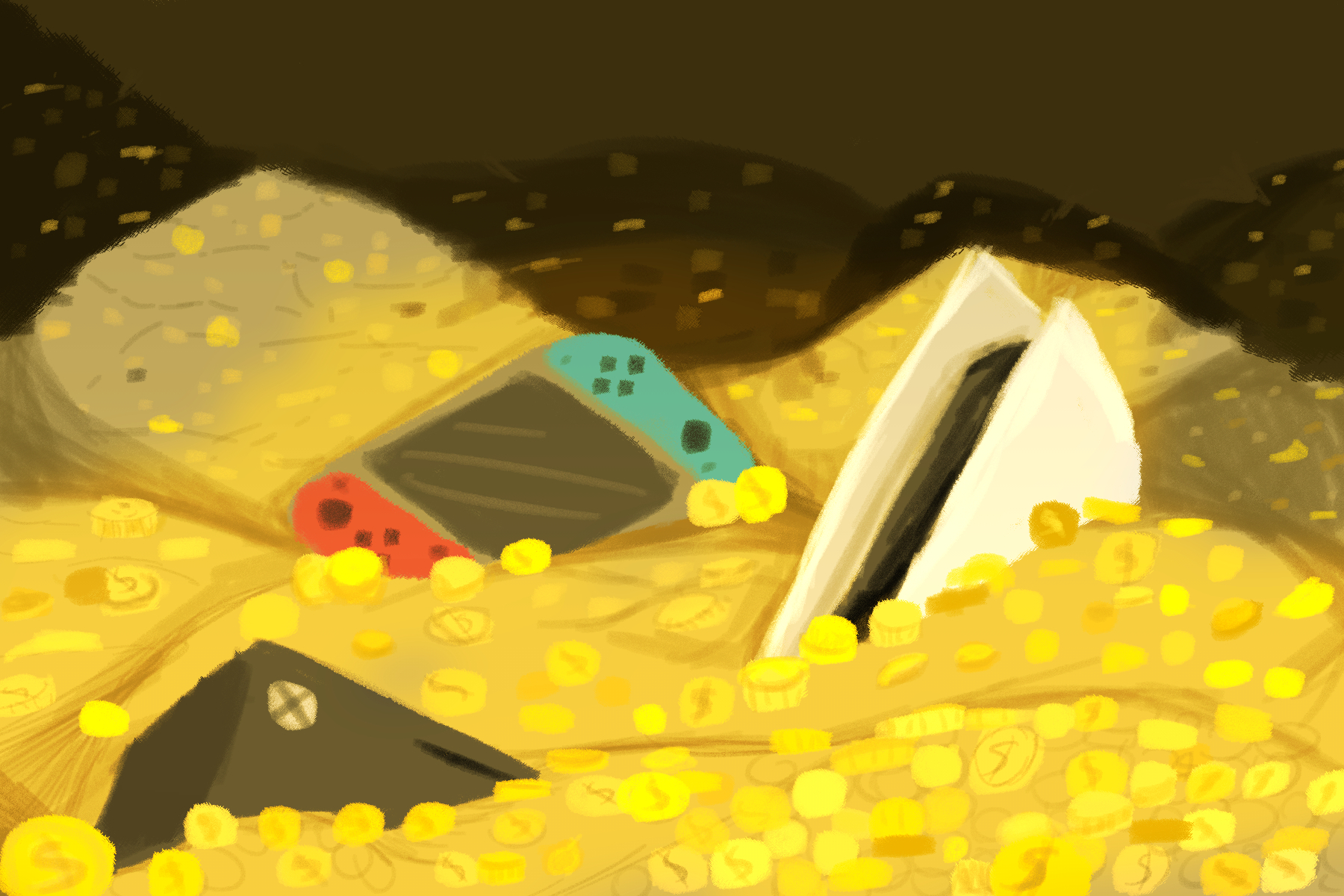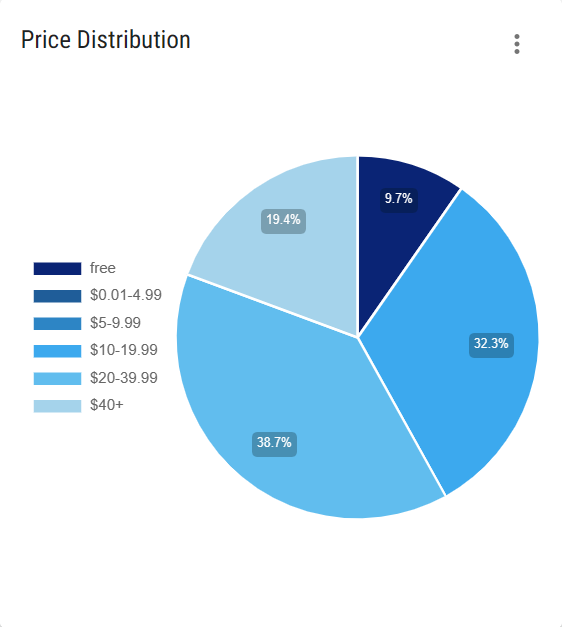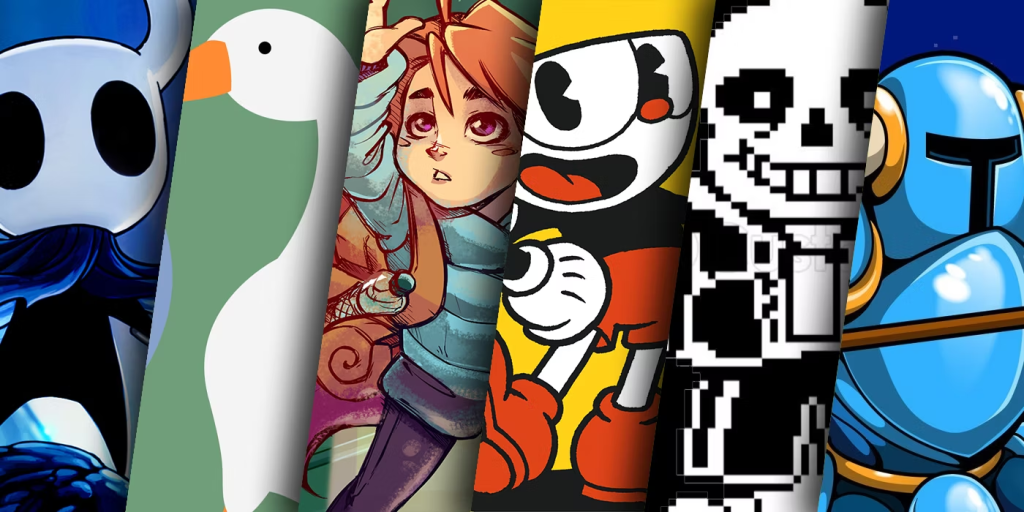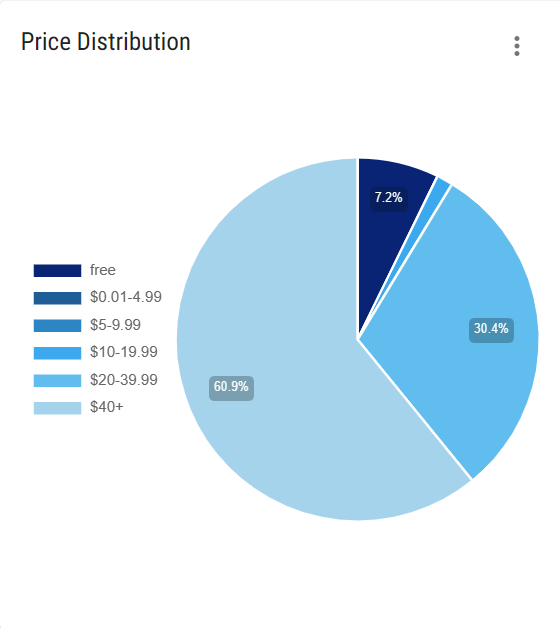
Buried Under Coins:
Rising Prices in the Video Game Industry
Attribution
Image from Why Are Video Games Getting So Expensive? (studybreaks.com).
It’s no secret that gaming as a hobby is getting more expensive. This isn’t a problem unique to video games, but with more and more people getting involved with the hobby every year, it’s starting to get more noticeable. Major companies have become comfortable with charging $70 for so-called AAA games, even though their releases are getting lackluster responses from fans. Games are coming out of studios unfinished, full of bugs, and completely devoid of the signs of passionate development that fans have come to expect. Despite these gripes, more and more money is being taken from consumers’ wallets to justify rising production costs.
Steam, a digital storefront owned by the video game company Valve, is the predominant marketplace for PC gamers to purchase games. They are willing to host games from even independent publishers for a 30% cut of revenue, but they are no strangers to the AAA market. In 2023, only 69 of the 14,401 games released on Steam were categorized as AAA, including massive hits like Baldur’s Gate 3 and Street Fighter 6.

Compared to five years earlier in 2018, when only 31 AAA games were released with only 19.4% being over $40.

Attribution
Charts from Gamalytic
More high production cost games are being released, and more of them are releasing at high prices. So, what is driving this continuous trend upwards? Many agree that the reason is quite simple—
Because people will still buy games.
With the hobby growing steadily, the market is expanding to match it. There is leeway for large companies to charge more when more people are buying games, and it should come as no surprise that every corporation around will exploit that fact at every opportunity.

In 2022, Steam itself took part in this consistent inflation of game prices by upping their Regional Pricing Recommendations. Even though these are just recommendations, they affect how game prices are perceived by lending a sense of uniformity to Steam’s prices. This is the first time these recommendations have changed since 2020, and Valve has announced that they plan on adjusting them every year from 2022 onwards. If this trend continues annually, these slight increases will add up very quickly. In regions with high inflation rates, the recommended price has increased more than 400%, making it even more difficult for players in those regions to afford entertainment.
Attribution
Chart from SteamDB
Price increases across the industry are made more frustrating by the perceived decrease in quality and in job security in the game development field. “Live-service” is becoming one of the most dreaded phrases for gamers to see, as it means that the game will likely release before it has been completed, with developers pressured to continually release small content updates across a two-to-four year period before the game’s overhead costs cause it to get shut down by the owning company.
The recent release of Suicide Squad: Kill the Justice League by Rocksteady Studios has been panned by fans and critics alike. The game appears to suffer from the same problems as recent superhero-themed fumbles The Avengers and Gotham Knights: A fundamental misunderstanding of what players want. Each of these games was released as a live-service product with many unfinished elements, and each of them functioned like existing looter-shooter games that have been out of favor with the greater gaming community for years.

Attribution
Review scores from Metacritic.
Extra History on Youtube makes the point that solely accounting for annual inflation and without supporting revenue models like DLC, Battle Passes, or premium currency, a AAA game would cost around $90 today. This is a rather shocking observation, but it sheds some light on why so many games feel overloaded with microtransactions.
So, what options are available to the growing gaming community? Are gamers doomed to drown under a rising tide of exorbitant prices, or will there be a breaking point where the trust between the company and the consumer is gone for good?

The solution likely lies in indie gaming, with small developers taking up the cause of high-quality passion projects that can be released for a lower initial cost. Games like Vampire Survivors and Balatro have proven that a game with a strong base concept and a high degree of polish can be runaway successes, without needing a large studio to back them. Gamers need to come together and provide community support to games like this instead of AAA disappointments, as their future is tied to their success.
Attribution
Image from What Makes an Indie Game Anyway? (collider.com).
What do you think? Is indie gaming the inevitable solution to the ever-rising tide of AAA game pricing, or is it just a symptom of the larger inflation problem? Leave a comment and let me know your thoughts.
